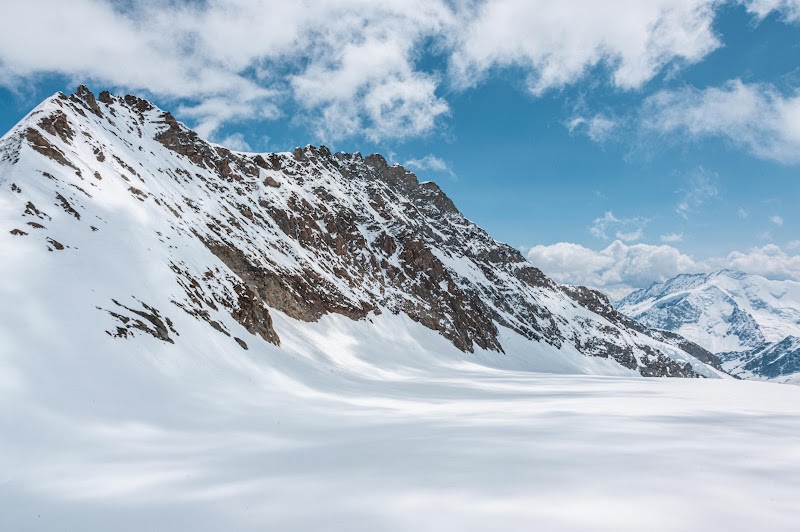
Jungfrau-Aletsch World Heritage Site Adventures
The Jungfrau-Aletsch World Heritage Site, located in the Swiss Alps, is renowned for its majestic mountain ranges and the vast expanse of the Aletsch Glacier, attracting outdoor enthusiasts and nature lovers alike.
About Jungfrau-Aletsch World Heritage Site

The Jungfrau-Aletsch World Heritage Site spans across parts of the Swiss Alps and is recognized for its unique combination of natural beauty and diverse ecological systems. At its heart lies the Aletsch Glacier, the largest glacier in the Alps, which stands as a testament to the power of glacial formations. The region is adorned with dramatic terrains featuring towering peaks like the Jungfrau, Mönch, and Eiger. These geological marvels provide a habitat for a wide array of flora and fauna, showcasing pristine alpine ecosystems. Visitors can explore historical aspects through traditional alpine villages and pastures that shed light on centuries-old human interaction with this landscape. Outdoor enthusiasts flock to the site for its endless recreation opportunities including hiking, climbing, and skiing. Notable landmarks such as the Jungfraujoch railway station—the highest in Europe—offer breathtaking panoramic views. This area is not only a hub for recreational activities but also a place of scientific interest, particularly in terms of glaciology and alpine geology.
Highlights
Aletsch Glacier
Jungfraujoch – Top of Europe
The scenic route of the Eiger Trail
UNESCO-recognized natural beauty and diversity
Notable Natural Features
Aletsch Glacier
The largest glacier in the Alps, a focal point for hikes and guided tours.
Jungfraujoch
A mountain pass where visitors can access the Sphinx Observatory and enjoy all-around views of the Alps.
Eiger North Face
One of the most iconic and challenging climbing faces in the world.
